Lawn Turf Installation in Local Gardener
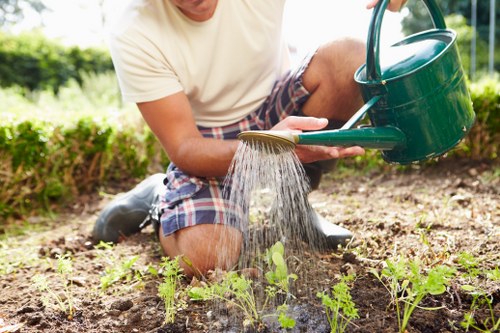
Introduction to Lawn Turf Installation
Transforming your outdoor space begins with the lawn turf installation. Whether you're a homeowner or a business owner, a lush, green lawn can significantly enhance the aesthetic appeal and value of your property. Partnering with a local gardener ensures that your turf is installed correctly, tailored to your specific needs and local climate conditions.
The process of turf installation involves several critical steps, each contributing to the long-term health and beauty of your lawn. From selecting the right type of turf to proper soil preparation and maintenance, every detail matters. This article explores the comprehensive process of turf installation, highlighting the benefits of working with professional local gardeners.
One of the primary advantages of choosing a local gardener for your lawn turf installation is their expertise in the regional soil types and climate. They can recommend the best turf varieties that thrive in your area, ensuring a resilient and vibrant lawn. Additionally, local gardeners are familiar with common pests and diseases in the region, allowing them to implement preventive measures effectively.
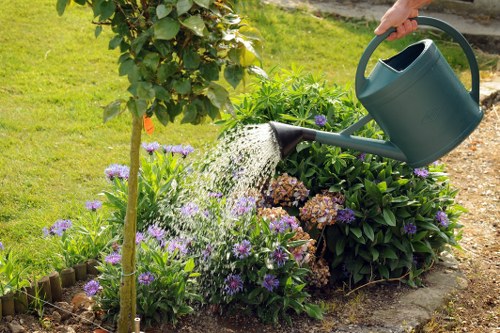
Choosing the Right Turf for Your Lawn
Selecting the appropriate turf is crucial for the success of your lawn. There are various types of turf grasses, each with its unique characteristics and requirements. Factors to consider include sunlight exposure, soil type, water availability, and the intended use of the lawn.
Local gardeners can guide you in selecting the ideal turf species that match your specific conditions. For example, if your lawn receives full sunlight and has well-draining soil, a warm-season grass like Bermuda or Zoysia may be ideal. Conversely, if your area experiences cooler temperatures, a cool-season grass such as Kentucky Bluegrass or Fescue might be more suitable.
Additionally, consider the maintenance level you can commit to. Some turf varieties require more frequent watering, mowing, and fertilization, while others are more drought-resistant and low-maintenance. Your local gardener can help balance your preferences with the practical aspects of lawn care.
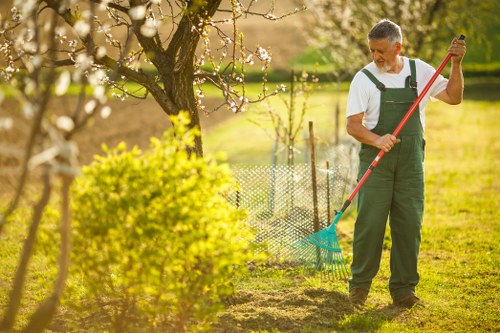
Preparing the Soil for Turf Installation
Proper soil preparation is the foundation of a healthy and durable lawn. Before laying the turf, it's essential to assess and amend the soil to create optimal growing conditions. This involves testing the soil's pH levels, nutrient content, and drainage capacity.
A local gardener will conduct a thorough soil analysis to identify any deficiencies or imbalances. Based on the results, they can recommend the necessary amendments, such as adding lime to raise pH levels or sulfur to lower them. Incorporating organic matter like compost improves soil structure, enhances nutrient availability, and promotes beneficial microbial activity.
Ensuring proper drainage is also vital. Poor drainage can lead to waterlogging, root rot, and other lawn diseases. Your gardener may need to install drainage systems or modify the landscape to facilitate adequate water flow away from the turf area.
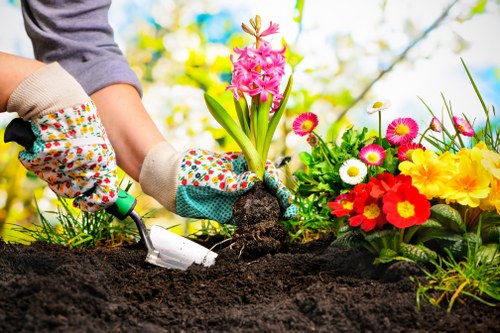
The Turf Installation Process
Step 1: Site Preparation
Begin by clearing the installation area of any existing vegetation, rocks, and debris. This ensures a clean slate for the new turf to establish itself. Excavating the soil to the appropriate depth is necessary to accommodate the turf roots and prevent future settling.
Step 2: Soil Amendment
After clearing the site, incorporate the recommended soil amendments based on the soil test results. This enhances soil fertility, structure, and drainage, providing a conducive environment for the turf to thrive.
Step 3: Grading and Leveling
Achieving a level surface is essential for uniform turf growth and aesthetic appeal. Use grading tools to ensure the soil is evenly distributed, eliminating any lumps or depressions that could hinder proper water distribution and root development.
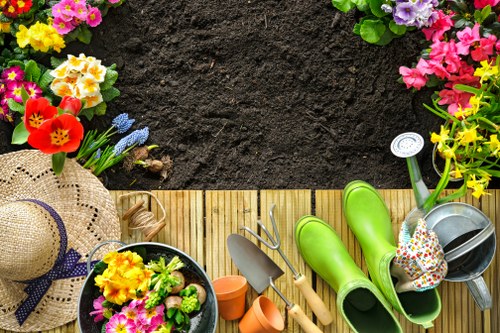
Installing the Turf
Step 4: Laying the Turf
Start laying the turf along a straight edge, such as a pathway or driveway, to ensure a neat appearance. Place the rolls tightly together, staggering the joints like bricks to prevent gaps. Avoid overlapping edges to minimize the risk of turf edges lifting or drying out.
Step 5: Watering and Settling
After installation, thoroughly water the turf to help the roots establish contact with the soil below. Maintain consistent moisture levels for the first few weeks, gradually reducing frequency as the turf becomes established. Proper watering is critical to prevent drying out and encourage healthy root growth.
Step 6: Initial Maintenance
During the initial stages, avoid heavy foot traffic on the new lawn. Regular mowing should begin once the turf reaches an appropriate height, typically around 3 inches. Fertilizing and pest control measures should follow the schedule recommended by your local gardener to support ongoing lawn health.
Benefits of Professional Turf Installation
- Expertise: Professional gardeners bring specialized knowledge to ensure each step of the installation is executed correctly.
- Quality Turf: Access to high-quality turf varieties that are best suited for your local environment.
- Time Efficiency: Experienced professionals can complete the installation process more quickly and efficiently.
- Long-Term Health: Proper installation techniques lead to a durable and healthy lawn that requires less maintenance over time.
Investing in professional turf installation services guarantees that your lawn will be a vibrant and welcoming space for years to come. The attention to detail and personalized care provided by local gardeners make all the difference in achieving a perfect lawn.
If you're ready to enhance your outdoor space with a beautiful lawn, don't hesitate to take the next step. Contact us today to schedule a consultation and begin your journey toward a stunning, green lawn.
Maintenance Tips for Your New Lawn
Once your lawn turf installation is complete, proper maintenance is essential to ensure its longevity and beauty. Here are some key maintenance tips:
- Regular Mowing: Keep your lawn at the recommended height for your turf type. Avoid cutting more than one-third of the grass blade at a time.
- Watering: Water deeply and infrequently to encourage deep root growth. Early morning is the best time to water to reduce evaporation and prevent disease.
- Fertilizing: Apply a balanced fertilizer based on your lawn's specific needs. Follow the schedule recommended by your local gardener.
- Pest Control: Monitor for signs of pests and diseases. Promptly address any issues with appropriate treatments.
- Aeration: Aerate your lawn annually to improve soil ventilation and reduce compaction.
Maintaining your lawn requires ongoing effort, but the rewards of a lush, green outdoor space are well worth it. Consistent care ensures that your turf remains healthy and vibrant throughout the seasons.
For personalized maintenance plans and expert advice, consider partnering with your local gardener. Their tailored services can help you achieve the best results with minimal hassle.
Choosing the Right Local Gardener for Your Turf Installation
When selecting a local gardener for your lawn turf installation, consider the following factors to ensure you choose the best professional for your needs:
- Experience: Look for gardeners with extensive experience in turf installation and lawn care.
- Reputation: Check reviews and ask for references to gauge the quality of their work.
- Services Offered: Ensure they provide comprehensive services, from soil preparation to ongoing maintenance.
- Knowledge: A knowledgeable gardener can offer valuable insights and recommendations tailored to your specific situation.
- Cost: Obtain detailed quotes to compare pricing and ensure it fits within your budget.
By carefully evaluating potential gardeners, you can find a trusted partner who will deliver exceptional results for your lawn turf installation.
Ready to create your dream lawn? Book your service now and enjoy a beautiful, thriving outdoor space that enhances your property's allure.
Common Challenges in Turf Installation and How to Overcome Them
While turf installation can significantly improve your property's appearance, certain challenges may arise during the process. Understanding these obstacles and how to address them can ensure a successful installation:
Uneven Soil Surface
An uneven soil surface can lead to an irregular lawn with areas that are prone to water pooling or eroding. Proper grading and leveling are essential to create a uniform surface for turf laying.
Poor Soil Quality
Soil that lacks necessary nutrients or has improper pH levels can hinder turf growth. Conducting a soil test and applying the recommended amendments can rectify these issues, promoting a healthy lawn.
Inadequate Drainage
Poor drainage can cause waterlogging, leading to root rot and other lawn diseases. Installing proper drainage systems or adjusting the landscape to facilitate water flow can resolve this problem.
Weather Conditions
Extreme weather conditions, such as excessive heat or heavy rainfall, can impact turf establishment. Planning the installation during optimal weather periods and providing appropriate care can mitigate these challenges.
Pest Infestations
Pests like grubs and insects can damage turf roots and blades. Implementing preventive measures and timely treatments are crucial to protect your lawn from infestations.
Addressing these challenges requires expertise and proactive planning. Engaging a skilled local gardener can help navigate these issues effectively, ensuring a resilient and beautiful lawn.
Don't let potential hurdles deter you from achieving the lawn of your dreams. Contact us today to learn how we can help you overcome these challenges and enjoy a stunning, healthy lawn.
Eco-Friendly Turf Installation Practices
Embracing eco-friendly practices in turf installation can contribute to environmental sustainability while maintaining a pristine lawn. Here are some green approaches to consider:
- Organic Fertilizers: Use natural fertilizers to enrich the soil without introducing harmful chemicals.
- Water Conservation: Implement efficient irrigation systems, such as drip irrigation or smart sprinklers, to minimize water usage.
- Native Turf Varieties: Choose grass species native to your region, as they are better adapted to local conditions and require less maintenance.
- Composting: Recycle lawn clippings and organic waste into compost to enrich the soil naturally.
- Pest Management: Employ biological pest control methods to reduce reliance on chemical pesticides.
Incorporating these sustainable practices not only benefits the environment but also promotes a healthier lawn. Eco-friendly turf installation can lead to reduced maintenance costs and a more resilient outdoor space.
If sustainability is important to you, discuss eco-friendly options with your local gardener. They can help integrate green practices into your turf installation process, ensuring a beautiful and environmentally responsible lawn.
Cost Considerations for Lawn Turf Installation
Understanding the costs associated with lawn turf installation is essential for budgeting and planning. Several factors influence the overall expense:
- Turf Type: The cost varies based on the grass species chosen. Premium varieties may be more expensive but offer superior durability and appearance.
- Area Size: Larger lawns require more turf and materials, increasing the total cost.
- Soil Preparation: Extensive soil amendments and grading can add to the installation expenses.
- Labor Costs: Professional installation services typically charge based on the complexity and size of the project.
- Additional Features: Installing irrigation systems, drainage solutions, or decorative elements can impact the overall budget.
While the initial investment in turf installation may seem significant, the long-term benefits of a healthy, attractive lawn can outweigh the costs. A well-installed lawn enhances property value, reduces erosion, and provides a pleasant outdoor space for relaxation and entertainment.
For a detailed and accurate estimate, consult with your local gardener. They can assess your specific needs and provide a comprehensive quote that aligns with your budget.
Ready to invest in your lawn's future? Book your service now and take the first step toward a stunning, green landscape.
Conclusion
Achieving a vibrant and healthy lawn starts with proper turf installation. Partnering with a knowledgeable and experienced local gardener ensures that every aspect of the installation process is handled with care and expertise. From selecting the right turf to meticulous soil preparation and ongoing maintenance, professional guidance is invaluable.
A beautiful lawn not only elevates the visual appeal of your property but also provides a welcoming space for outdoor activities and relaxation. By following the best practices outlined in this article and working closely with your local gardening experts, you can enjoy a lush, resilient lawn that stands the test of time.
Don't wait to transform your outdoor space. Contact us today to schedule your lawn turf installation and embark on your journey to a greener, more beautiful property.